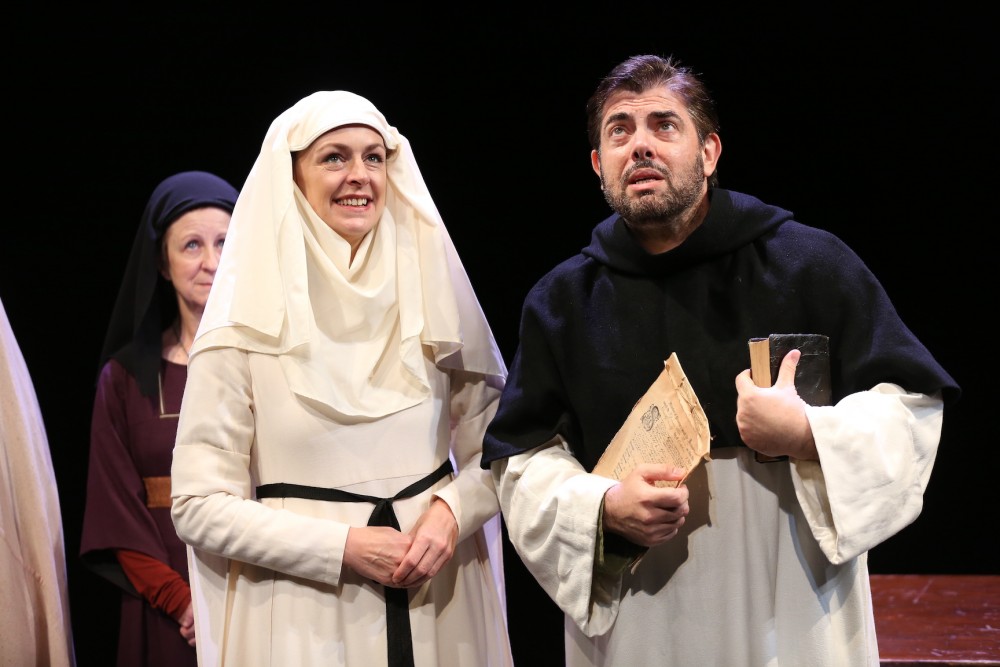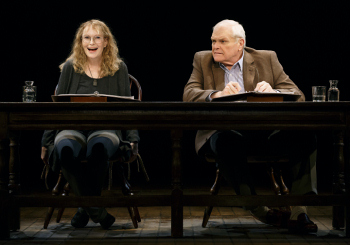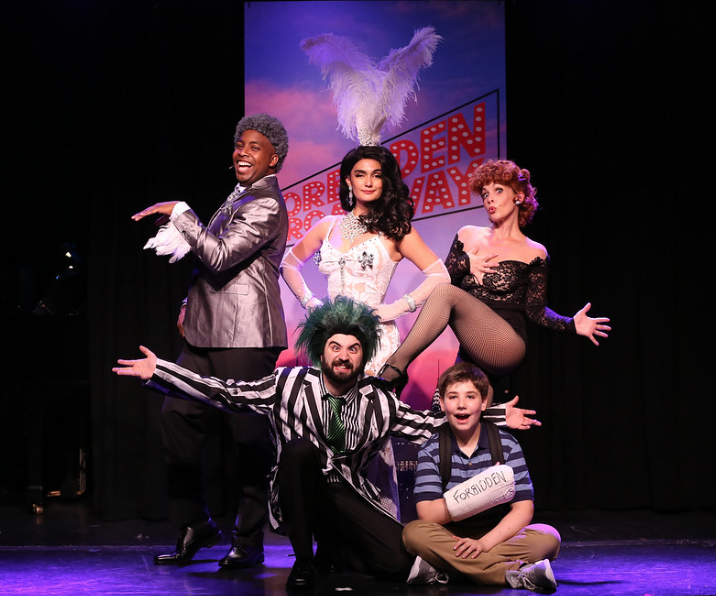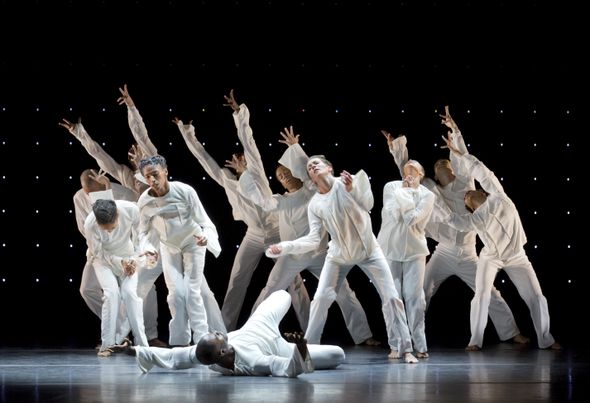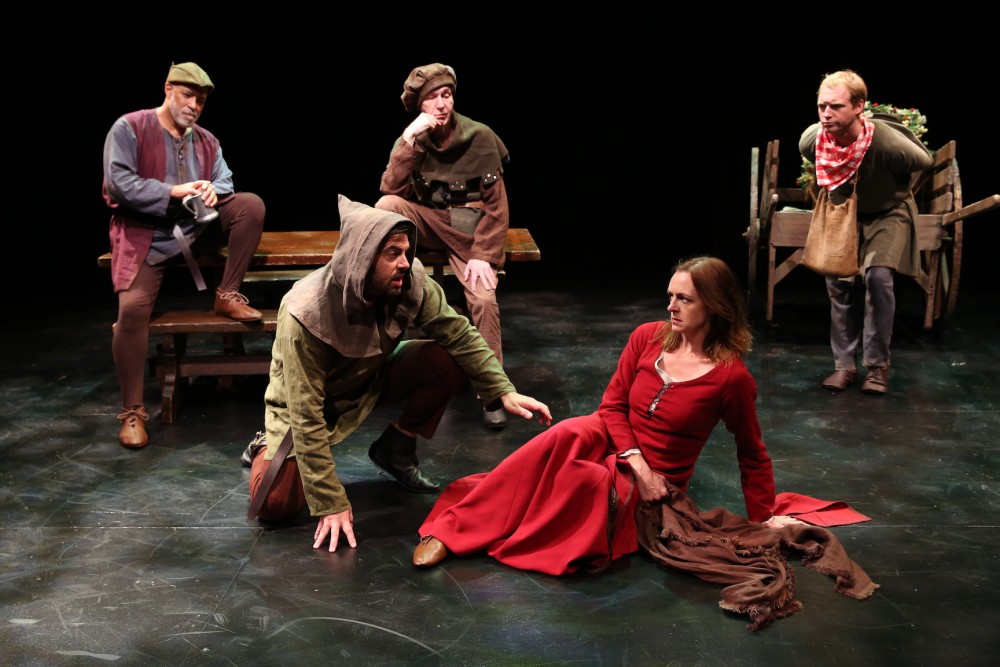
Jason O’Connell and Andrus Nichols (foreground) with Micheal Genet, Timothy Doyle and Thomas Sommo
by Samuel L. Leiter
Although hardly a household name in New York theatrical circles, John Wulp, now 90, has had a rather abundant career as a playwright, director, designer, and producer, as well as in the fields of art and photography.
His first play, The Saintliness of Margery Kempe, now in revival at the Duke, is based on the life of a Christian mystic, Margery Kempe, an Englishwoman who lived in the late 14th century. It debuted Off Broadway in 1959 at the York Playhouse (not to be confused with today’s York Theatre) with a cast including future stars Frances Sternhagen, Gene Hackman, Charles Nelson Reilly, Patricia O’Connell, and George Maharis. The costumes were by Theoni V. Aldredge, soon to be one of our finest designers.
That production, a much revised version of a script produced a year earlier, in 1958, by the Poets Theatre, Cambridge, MA, ran briefly before disappearing into the mists of theatre history. Brooks Atkinson wrote in the Times that it was “a thin though amusing caricature of [Kempe’s] efforts to achieve notoriety by conversion to the faith and a pilgrimage to the Holy Land.” The same might be said of the play’s revival, a resuscitation of the Cambridge script—which includes many more characters than the York version—engineered by ubiquitous actor-director Austin Pendleton.
Pendleton was right to notice that the play’s insistently ambitious and aggressively self-centered title character reflects certain aspects of our contemporary world. Most noticeably, these fluctuate on the feminist spectrum from the MeToo to the Lean In movements. However, the thematic relevance of a forgotten play doesn’t automatically translate into dramatic effectiveness. The Saintliness of Margery Kempe has much of interest but it’s also something of a theatrical lump.
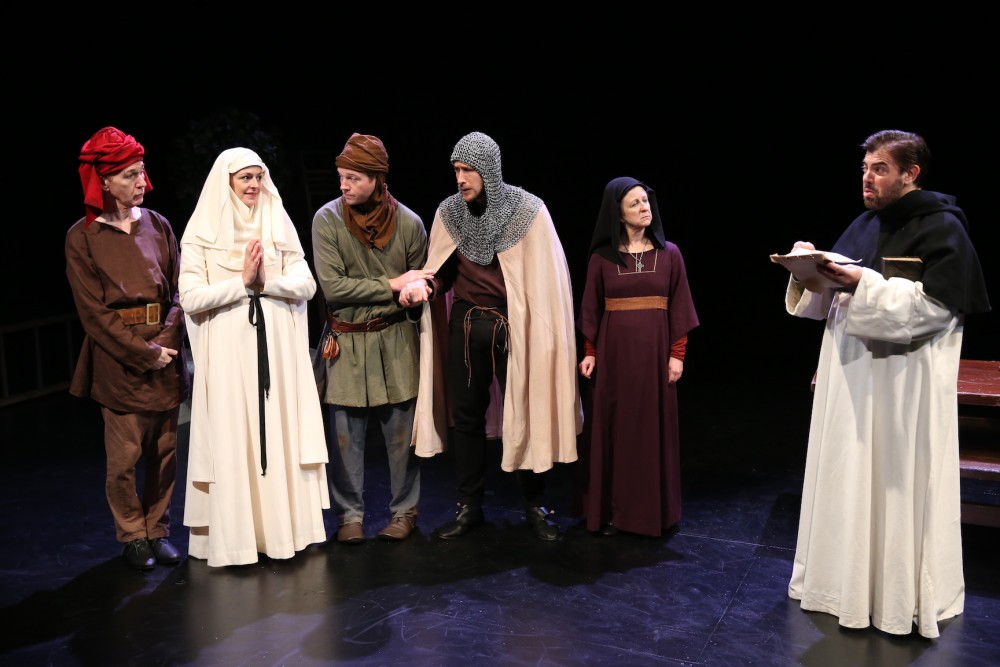

Timothy Doyle, Andrus Nichols, Thomas Sommo, Vance Barton, Pippa Pearthree and Jason O’Connell
Written in wryly colloquial language, the episodic play offers a cheeky overview of its heroine’s life in the form of the picaresque, parable-like journey she embarks on to fulfill her destiny. The narrative is largely based The Book of Margery Kempe, apparently dictated by the illiterate woman, which is said to be among the first English-language autobiographies.
Wulp’s play, whose style is vaguely suggestive of Brecht, offers essential historical details but takes liberties by converting Margery, a religious fanatic who wore a hair shirt, into a modern, self-directed woman. Not beyond sensual temptations, she nonetheless fends off male predators, bamboozles her doubters, and stands on her own two feet while still being prone to the excessive weeping for which the original was known. In telling Margery’s story, Wulp occasionally cooks up tasty tidbits of religiosity and morality.
The action follows Margery (Andrus Nichols) after she decides to leave her husband (Jason O’Connell) and six children (the real Margery had 14) to satisfy her yearning for something “spectacular.” This includes her purchasing a brewery, whose lousy beer sinks her business prospects, and her claim that she has visions, which propels her successful mission to become a saint (a Wulpian invention). Sainthood—the eligibility for which Wulp nicely satirizes—is a reward whose transactional value the unsaintly woman is quick to recognize.
Margery comes into contact with various colorful personages, such as the handsome Devil, called the Man in Black (Vance Quincy Barton); cons her way into a group making a pilgrimage to Jerusalem; and, as the song goes, realizes that happiness lies right in her own backyard. If it’s still there, that is.
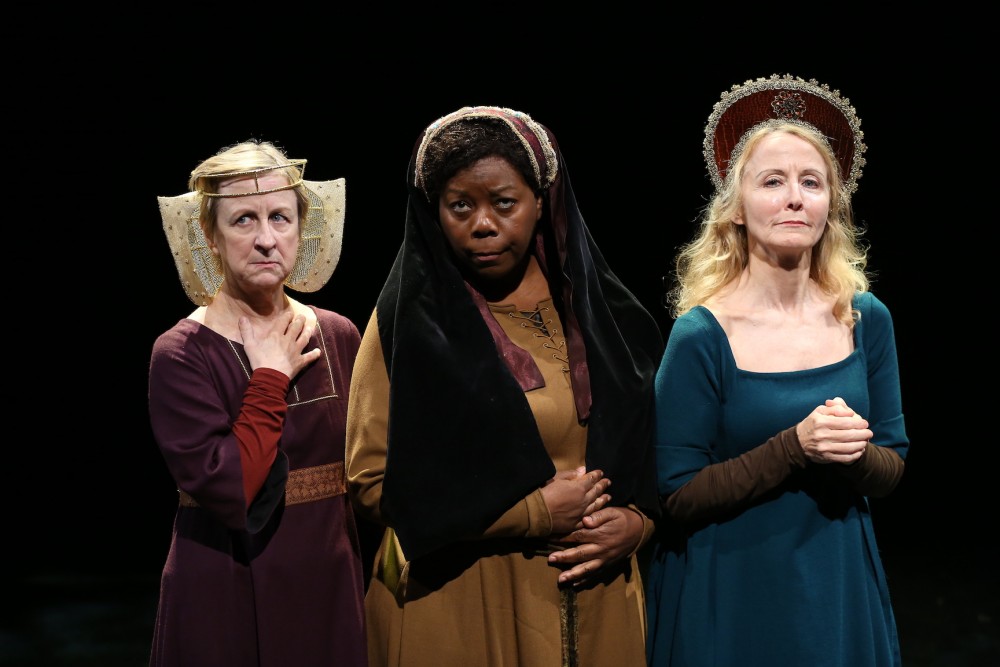

Pippa Pearthree, LaTonya Borsay and Ginger Grace
Working under Pendleton’s enthusiastic if not particularly inventive direction, Andrus Nichols, tall and slender, makes a dynamic and forceful Margery, embodying the comical and serious sides of her kooky determination. The energetic ensemble of eight supporting actors (O’Connell, Barton, Pippa Pearthree, LaTonya Borsay, Timothy Doyle, Michael Genet, Ginger Grace, and Thomas Sommo), is generally effective even if it’s not always easy to determine who’s who among their multiple roles. Most of the transformations are effected—often as we watch—by minor changes in Barbara A. Bell’s suitably period costumes.
Wulp himself designed the practically nonexistent set, which is basically a black box furnished with the simultaneously present scenic props of a horse cart, a table, a fountain, and a bush. Jennifer Tipton and Matthew Richards’s lighting bring it to life, and Ryan Rumery provides atmosphere-enhancing music and sound effects (especially during a storm).
The Saintliness of Margery Kempe is worthy enough to deserve this new production. Still, played out over two hours and ten minutes, the arch manner in which Margery’s relatively undramatic experiences are presented, and the generally tepid quality of the humor, would try the patience of a saint.
The Saintliness of Margery Kempe. Through August 26 at The Duke on 42nd Street (229 West 42nd Street, between Seventh and Eighth Avenues). www.dukeon42.org
Photos: Carol Rosegg


